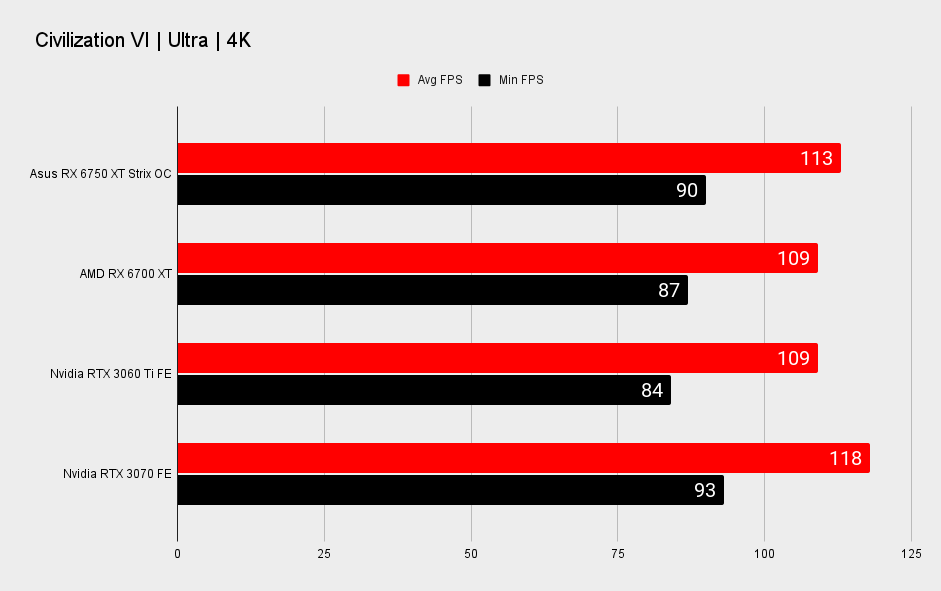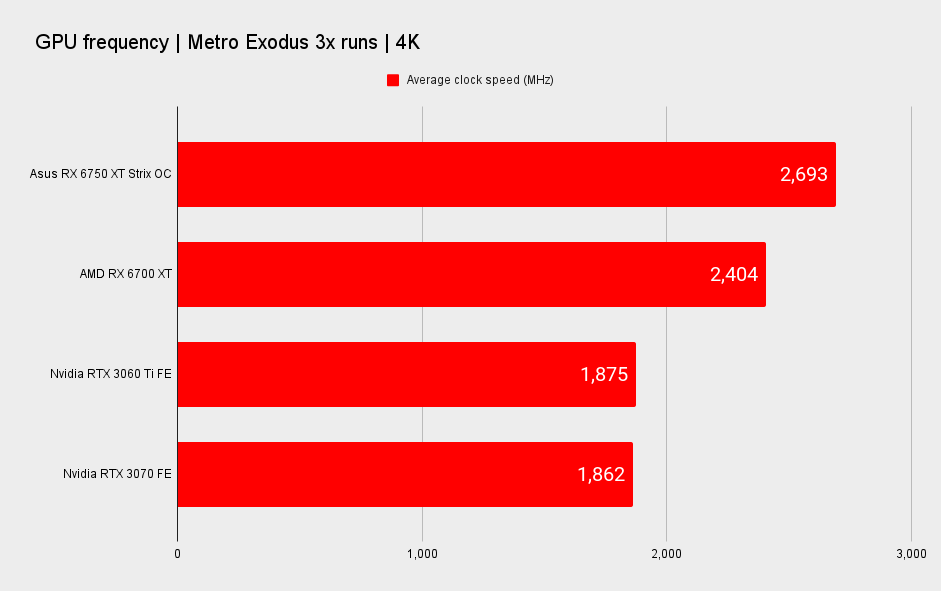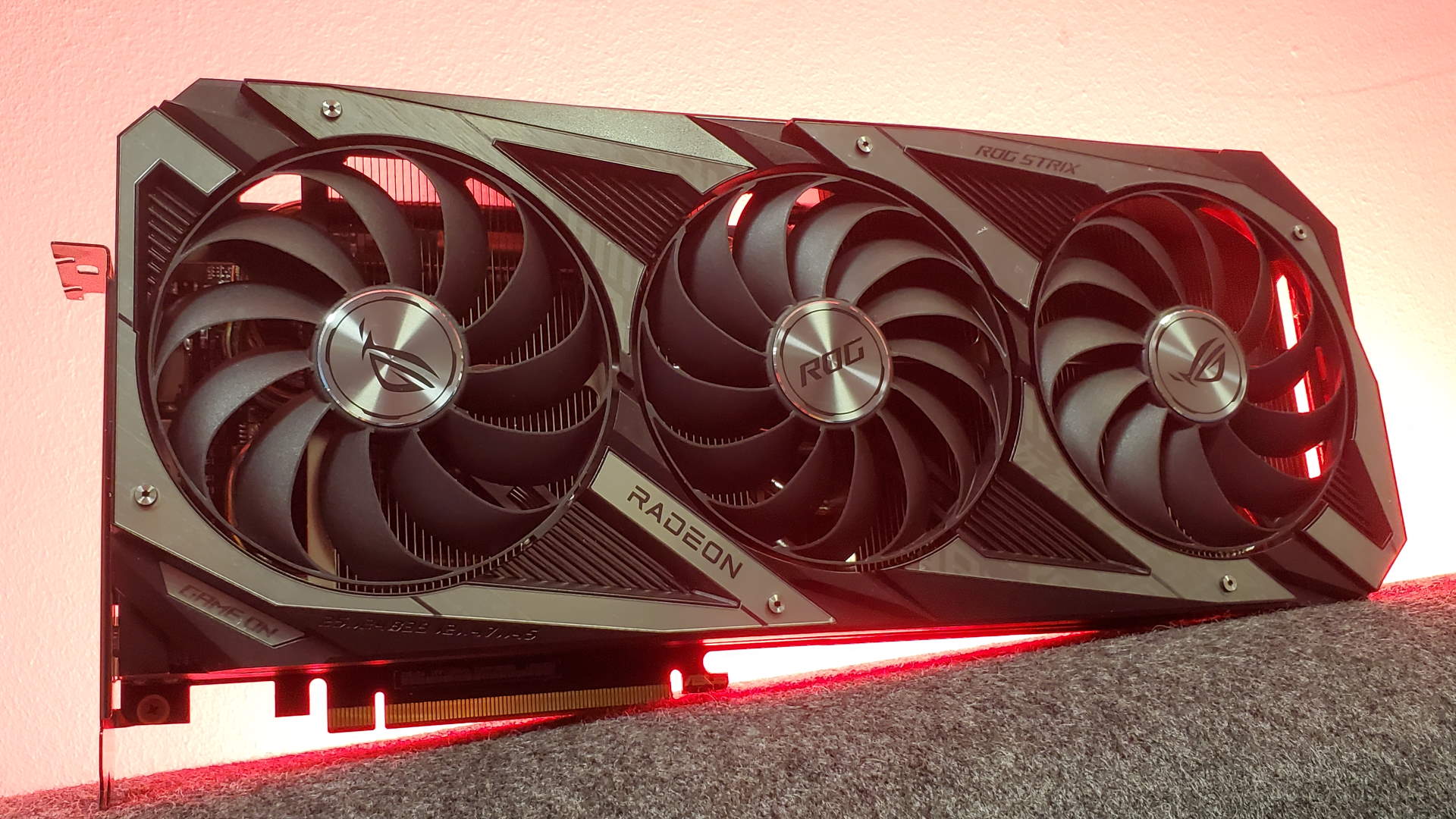Our Verdict
The Asus spin of the RX 6750 XT features a stunningly effective GPU cooler, a chip that runs at near 2.7GHz on average, but draws a whole heap of power doing it. And it's also super expensive at a time where the second-hand market is reborn and the notion of an MSRP product is once more a thing.
For
- Super cool running
- Runs at near 2.7GHz consistently
- Nails 1440p gaming
Against
- Very power hungry
- Massive
- Doesn't offer much more than an RX 6700
- This Asus version costs more than some RTX 3070s
PC Gamer's got your back
AMD's Radeon RX 6750 XT was billed as the GPU which offered the greatest chance of delivering a tangible performance uplift over its forebear. Though, like the Radeon RX 6950 XT, all I'm seeing is a factory-overclocked version of the previous card with a higher MSRP and heartier appetites. Don't get me wrong, Asus has once again created an excellent package for AMD's GPU, offering a cooling solution that is unsurpassed, even by the standards of the chonky chiller strapped to the MSI RX 6750 XT Gaming X Trio we've also checked out.
But there's nothing really that the refreshed RDNA 2 graphics card offers over and above its RX 6700 XT progenitor. Well, nothing welcome, anyways, because where it does outperform its Radeon brethren is in its appetite for energy.
At a time when the cost of power coming out of your plug sockets is going upwards at a frightening rate, AMD releasing a set of cards that can only deliver when they're drawing way more power than the previous cards feels a little tone-deaf.
But then that's the way GPUs have been trending for a long while now, so it's tough to be too down on the red team for going all-out, especially as these chips would have been specced up long before energy pricing got so spiky.
That spec itself is more or less identical to the RX 6700 XT, with the Navi 22 GPU still built on the same TSMC N7 node, with the same 2,560 shader design, and 12GB of GDDR6 memory. That memory is faster, however, coming in at 18Gbps as opposed to 16Gbps. It's that, combined with the higher boost clock speed the chip is capable of given its capacity for higher power draw, which delivers the higher gaming performance.
And it does comfortably offer higher clock speeds, too. Like the MSI card we've reviewed, the Asus Radeon RX 6750 XT Strix OC easily tops the rated 2,600MHz boost clock to sit at an average frequency just shy of 2,700MHz. Compare that to the reference RX 6700 XT I run in my office machine day in, day out, and you're looking at another 300MHz on average on top.

You can colour me ambivalent about what that clock speed actually means in terms of gaming frame rates.
That's way more than you might reasonably expect from a factory overclock of a graphics card, and yet you can colour me ambivalent about what that clock speed actually means in terms of gaming frame rates. Yeah, it's faster, just not in the way you'd hope to see from such a hefty bump in clock speed, power draw, and memory speed.
It's actually pretty disappointing then, and hard to find a reason to recommend anyone spend more on an RX 6750 XT over an RX 6700 XT. Or even a cheaper RTX 3060 Ti, if you could find one close to MSRP.
Which you probably won't, to be fair.
There are MSRP Radeon cards around, however, and that includes both the RX 6750 XT and RX 6700 XT. Which also makes a high-priced Strix edition card double tough as a recommendation. I've only been able to find the Asus RX 6750 XT Strix OC available for over $650, so when you can bag a similarly performing RX 6700 XT for $499, or a faster RTX 3070 for $630… I mean, why would you?
1080p gaming performance







1440p gaming performance








4K gaming performance








This thing averages nearly 2.7GHz GPU clocks and still only peaks at 56°C.
There are a couple of outliers, where the RX 6750 XT delivers more of a tangible jump in performance compared with either the RTX 3060 Ti or RX 6700 XT, but on the whole, the three GPUs offer around the same sort of frame rate. Though, it has to be said, that's a pretty hearty frame rate level—they nail 1080p gaming without a hitch, and I'd be comfortable running any of them at 1440p, confident that I was not going to have to do any heavy lifting myself in the settings screens.
It's worth noting that all our gaming benchmarks have been taken using the straight native performance of the GPU without any upscaling technologies in play. That's not because we're particularly down on them, just because it helps to give an idea of how the silicon itself performs. But now that Nvidia's DLSS and AMD's FSR are such established entities, and quite frankly brilliant, you will be getting outstanding 1440p performance results with either enabled on any of these $500–$600 cards
GPU performance




CPU - Intel Core i7 10700K
Motherboard - MSI MPG Z490 Gaming Carbon WiFi
RAM - Corsair Vengeance RGB Pro @ 3,200MHz
CPU cooler - Corsair H100i RGB Pro XT
PSU - NZXT 850W
Chassis - DimasTech Mini V2
Monitor - Eve Spectrum
Now that FSR 2.0 has gone completely open-source the hope is that any game which has been given the DLSS treatment can be quickly and relatively easily switched over to AMD's equivalent. And should mean there's little excuse for developers to implement the FSR tech from the get-go in new titles. In short, AMD is no longer missing out in the upscaling war.
But while this Asus Strix version is undoubtedly technically impressive—I mean this thing averages nearly 2.7GHz GPU clocks and still only peaks at 56°C under full load—it's massive for a mid-range card and draws a hell of a lot of juice. On average the old RX 6700 XT would suck down 213W, while this version runs at 274W, and will peak at 310W. For reference, that's higher than either the RTX 3060 Ti or RTX 3070, with the latter being comfortably the speedier GPU, too.


In the end, this is neither a slice of graphics silicon that I would recommend nor is it sitting within a graphics card package I'd suggest anyone considering dropping good money on today. The GPU market is changing right now and is arguably more fluid than at any point over the last couple of years. The latest crypto crash is seeing the second-hand market start up again, and prices at full retail are dropping, too.
And then there's the looming spectre of a whole new generation on the near horizon as well.
It may be time to consider looking at a budget/mainstream GPU purchase, as replacements won't drop until next spring time, but certainly not a $500+ graphics card.
The Asus spin of the RX 6750 XT features a stunningly effective GPU cooler, a chip that runs at near 2.7GHz on average, but draws a whole heap of power doing it. And it's also super expensive at a time where the second-hand market is reborn and the notion of an MSRP product is once more a thing.

Dave has been gaming since the days of Zaxxon and Lady Bug on the Colecovision, and code books for the Commodore Vic 20 (Death Race 2000!). He built his first gaming PC at the tender age of 16, and finally finished bug-fixing the Cyrix-based system around a year later. When he dropped it out of the window. He first started writing for Official PlayStation Magazine and Xbox World many decades ago, then moved onto PC Format full-time, then PC Gamer, TechRadar, and T3 among others. Now he's back, writing about the nightmarish graphics card market, CPUs with more cores than sense, gaming laptops hotter than the sun, and SSDs more capacious than a Cybertruck.



